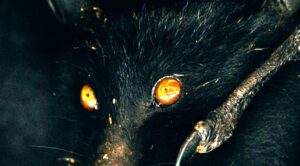
Scare Tactics: 7 Tricks for Writing Terrifying Horror Fiction & Monster Stories
Jessica Page Morrell gets down to brass tacks on how to successfully achieve fear and believability when crafting horror fiction and stories with monstrous antagonists.
OCT 30, 2018
Photo by Rob Potter
by Jessica Page Morrell
The bottom line for all fiction is that the story is a lie the reader can believe in, with characters he comes to know and care about. In horror fiction and monster stories, the bottom line is that the reader will believe and be afraid. The monster scares him, the villain’s powers and agenda scare him, and the characters’ own vulnerabilities scare him. The best horror stories force the reader to turn the pages with growing dread and prickling anxiety. These tales make the reader feel terrifyingly alone and ask how much control humans have over their fate.
So let’s get down to brass tacks on how to successfully achieve fear and believability when crafting tales of terror, especially those with monstrous antagonists:
-
INTRODUCE THE FRIGHTENING ELEMENTS EARLY.
Most horror and monster stories start fairly briskly, introducing the horror early or at least hinting at or establishing a pinprick of foreboding. For example, in the opening scenes of The Exorcist, the family hears a scratching noise from the walls and thinks they might have a rat infestation. As in The Exorcist, the characters might not take the threat seriously at first, but the neck hairs of moviegoers and readers are starting to prickle.
-
USE DELAY TACTICS TO ELEVATE THE TENSION AND SUSPENSE.
While the threat appears early, fear of the unknown is delicious, and you also must delay the ultimate dustup with the monster. Delay any questions nagging at the reader to create suspense. After all, before Little Red Riding Hood meets the Big Bad Wolf, she must walk alone in the dark woods. The reader must hear her hesitant footsteps and the wind sighing and moaning in the trees, see the deep shadows cast by the giant firs as she draws closer and closer to the wolf’s razor-sharp fangs, and feel that the world is eerily off-kilter and dangerous.
But don’t delay too long. While delay can be delightful, depending on the length of your story, typically by the end of Act 1 the reader must be fully involved with the physical reality and threat of the monster.
*****
Learn from the experts on how to write a horror story that excites readers for decades (or centuries)! Even the scariest and most attention-grabbing horror story ideas will fall flat without a foundation of knowledge about the genre and expectations of the audience. In this collection, you’ll find practical tips for writing horror stories that are plausible and cliché-free.
*****
-
MAKE SURE THE MONSTER OR THREAT APPEARS TO HAVE THE UPPER HAND AND IS UNSTOPPABLE.
In stories where a monster is on the loose, the humans are all vulnerable, at risk and trapped in a nightmare that appears as if there is no escape. In every dangerous encounter and around every creepy corner, the reader needs to be reminded of death and the fear of death. Often, the cauldron for your story—the vast ocean if it’s a sea monster, or a creepy castle if it’s a ghost story—must also give the monster some advantage.
-
TURN UP THE HEAT WITH PLOT TWISTS, SURPRISES AND REVERSALS THROUGHOUT THE STORY.
A story with a monster must depict what we rarely or never want to meet in real life. Keep in mind that all writing requires a series of twists and surprises while taking the reader where he doesn’t want to go. The reader wants your character to stay home tucked safely in bed, locked away from the sociopathic creep who is murdering women in the small town. So what does the character do? She spots a mysterious light flickering in the woods behind the house and sets out to explore, while the reader is yelling, “Get back into the house and bolt the door!” The reader is worried about what might leap out in the gloomy woods, but what if you sent the story in an even more sinister direction? What if the character is in layers of trouble, and not only is there a serial killer in her midst, but also something supernatural lurking right behind her?
-
USE THE STORY AS A TEST OF CHARACTER.
Most horror stories require the protagonist or victims of the monster to rise up to an extreme challenge or test of character. As in action stories, characters will manifest bravery and bravado. Because characters are often fueled by desperation and face overwhelming odds, including the unknown and the unexpected, the reader admires them just for surviving. A monster story provides writers with a particular showcase for a character’s primary traits. A courageous person will likely act courageously, and a coward might wimp out. The point is that this story type is perfect for unveiling characters and making the reader care about the outcome.
-
MAKE THE SETTING ATMOSPHERIC.
Following in the Gothic traditions from where it began, horror story settings must crackle with tension and danger and also create a world the reader can believe in. When a world that we know, with its smells of coffee and toast and bacon, is invaded by a monster, the results are deliciously involving. In horror stories, the world is unsettling and realistic at the same time. Language and sensory details are key to creating an atmosphere of tension and threat. However, the world must be tangible and believable. If the story world feels realistic, then when incredible events or never-before-seen creatures arrive on the scene, the incredible element will be more easily believed.
-
PROVIDE THE READER WITH AN EXTRA DOSE OF CATHARSIS IN THE ENDING.
